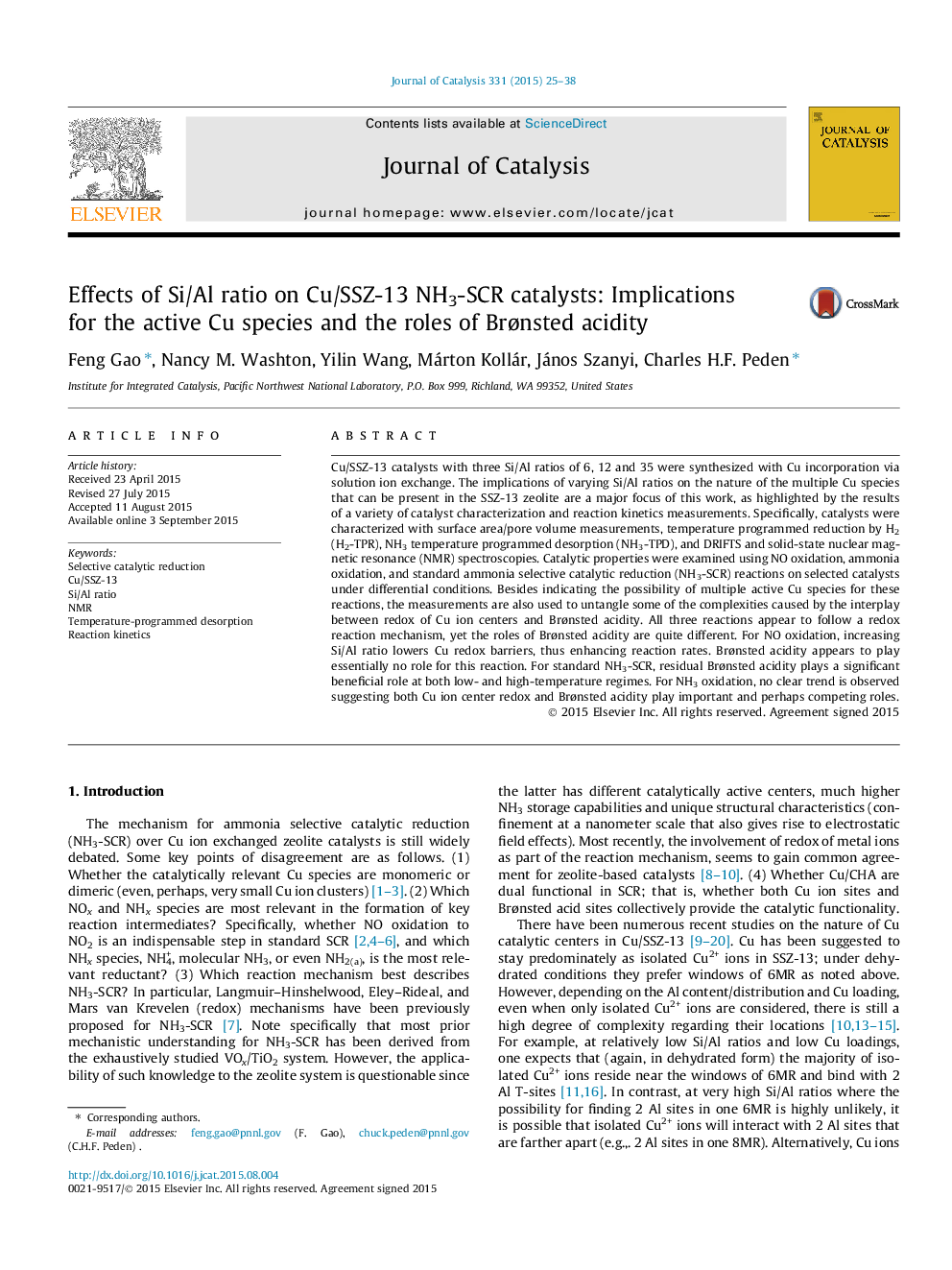| کد مقاله | کد نشریه | سال انتشار | مقاله انگلیسی | نسخه تمام متن |
|---|---|---|---|---|
| 60694 | 47543 | 2015 | 14 صفحه PDF | دانلود رایگان |

• Cu2+ ion locations and redox properties are systemically tuned by varying Si/Al and Cu/Al ratios.
• H2-TPR allows semi-quantification of all possible Cu2+ moieties.
• NO oxidation follows a simple redox mechanism.
• NH3 oxidation and standard NH3-SCR rates affected by both redox of Cu centers and Brønsted acidity.
• Brønsted acidity favors standard NH3-SCR without being an essential ingredient of the active site.
Cu/SSZ-13 catalysts with three Si/Al ratios of 6, 12 and 35 were synthesized with Cu incorporation via solution ion exchange. The implications of varying Si/Al ratios on the nature of the multiple Cu species that can be present in the SSZ-13 zeolite are a major focus of this work, as highlighted by the results of a variety of catalyst characterization and reaction kinetics measurements. Specifically, catalysts were characterized with surface area/pore volume measurements, temperature programmed reduction by H2 (H2-TPR), NH3 temperature programmed desorption (NH3-TPD), and DRIFTS and solid-state nuclear magnetic resonance (NMR) spectroscopies. Catalytic properties were examined using NO oxidation, ammonia oxidation, and standard ammonia selective catalytic reduction (NH3-SCR) reactions on selected catalysts under differential conditions. Besides indicating the possibility of multiple active Cu species for these reactions, the measurements are also used to untangle some of the complexities caused by the interplay between redox of Cu ion centers and Brønsted acidity. All three reactions appear to follow a redox reaction mechanism, yet the roles of Brønsted acidity are quite different. For NO oxidation, increasing Si/Al ratio lowers Cu redox barriers, thus enhancing reaction rates. Brønsted acidity appears to play essentially no role for this reaction. For standard NH3-SCR, residual Brønsted acidity plays a significant beneficial role at both low- and high-temperature regimes. For NH3 oxidation, no clear trend is observed suggesting both Cu ion center redox and Brønsted acidity play important and perhaps competing roles.
Figure optionsDownload high-quality image (112 K)Download as PowerPoint slide
Journal: Journal of Catalysis - Volume 331, November 2015, Pages 25–38